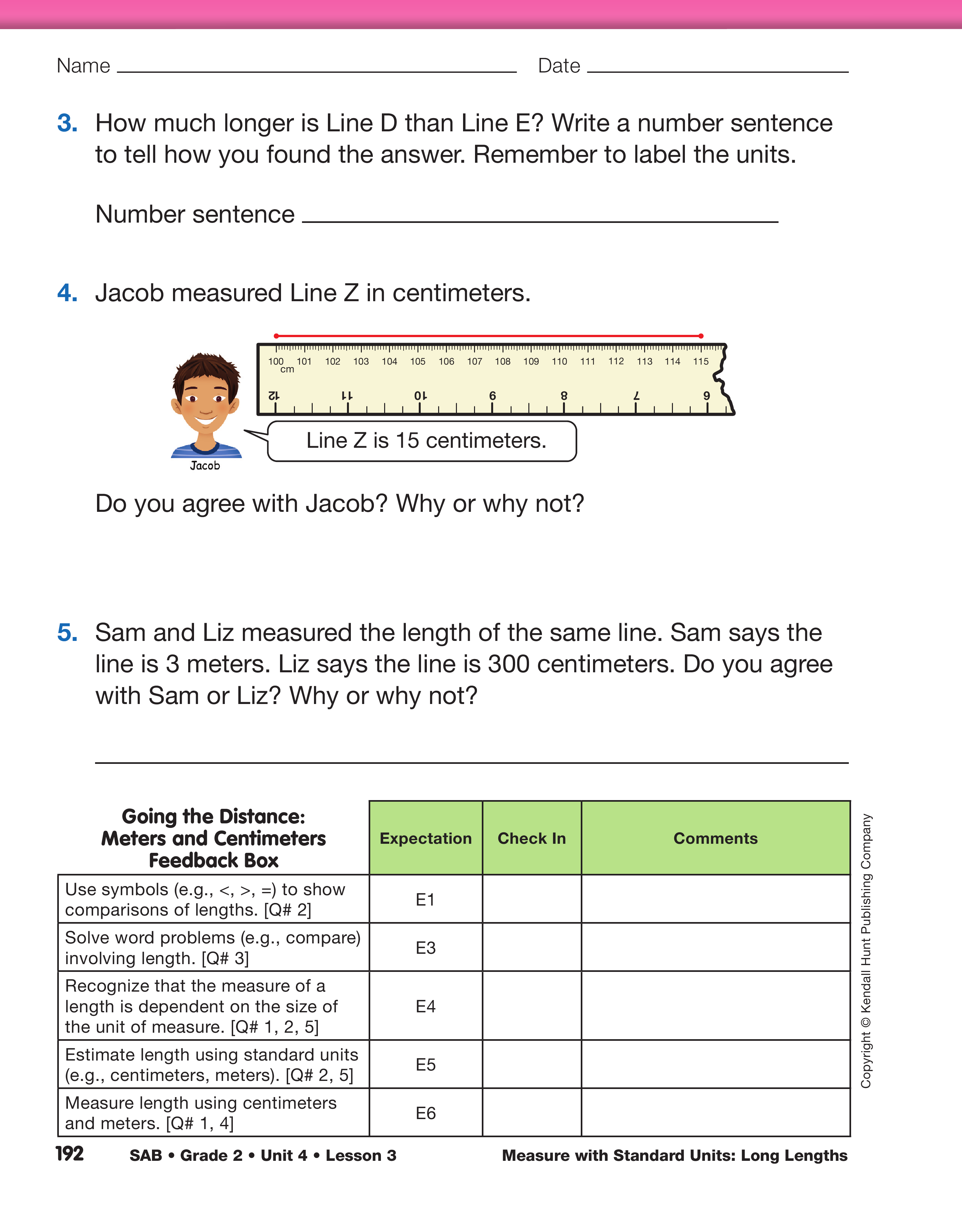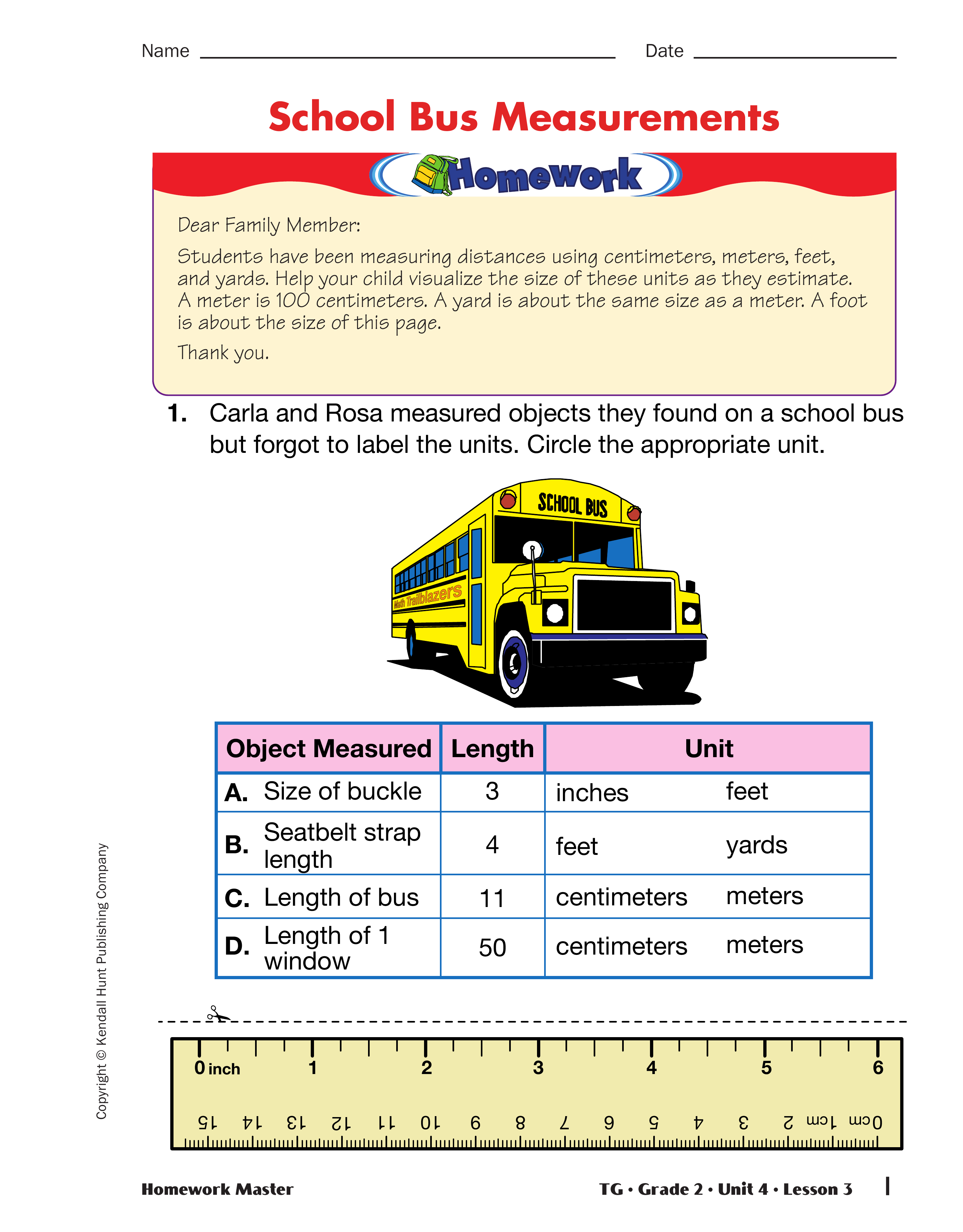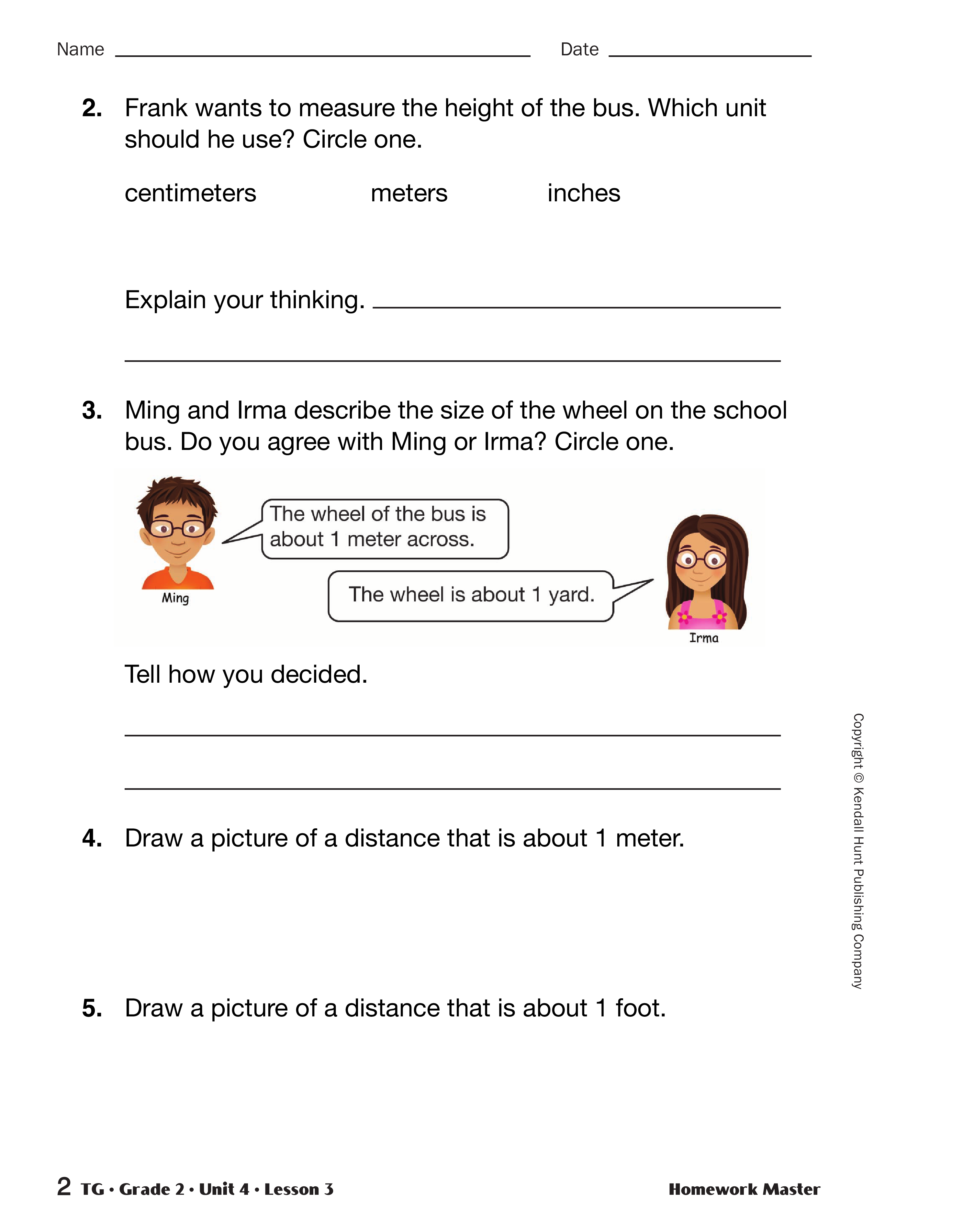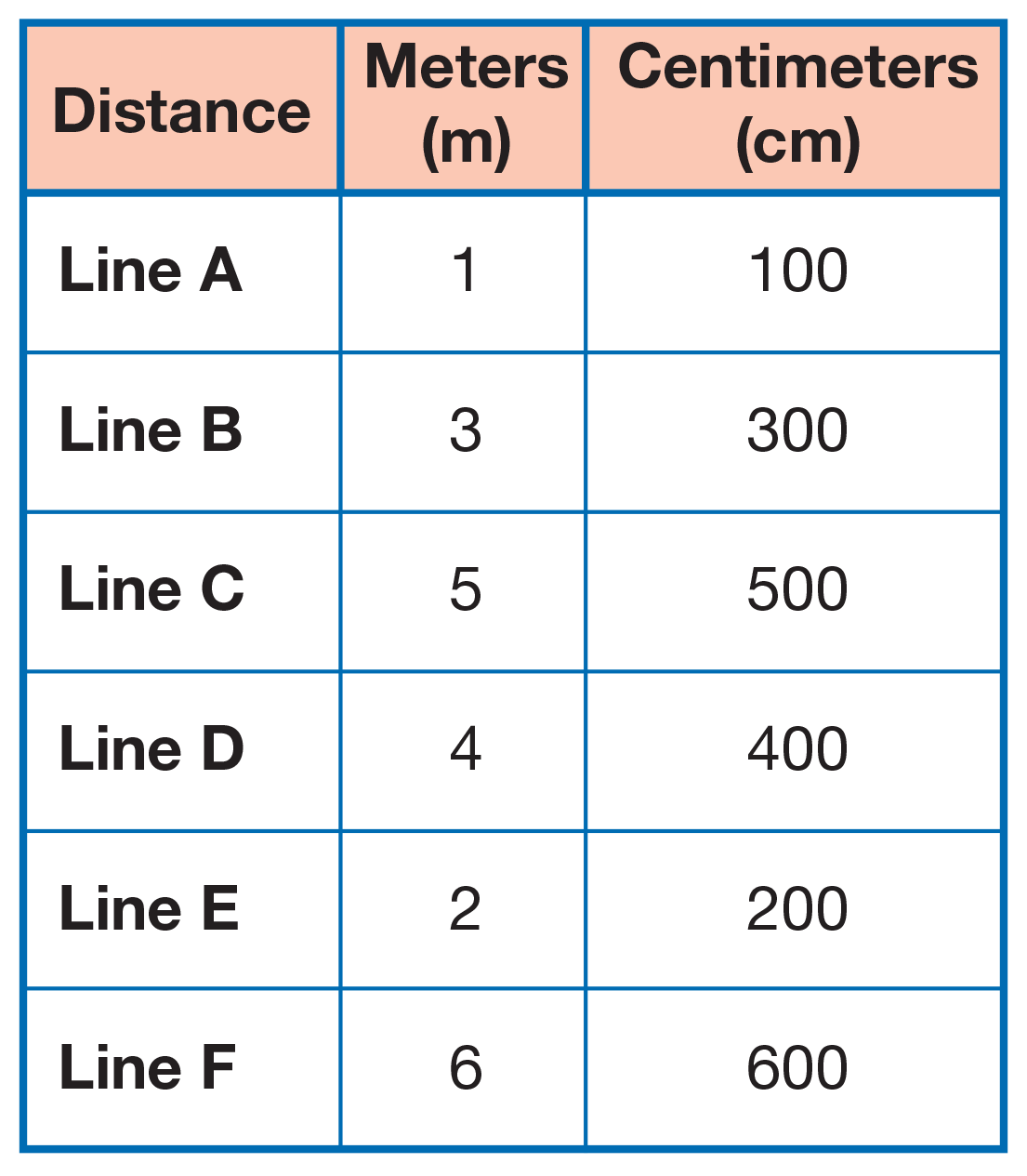Measure in Meters. Ask students to remove the
Going the Distance: Meters and Centimeters pages
from the Student Activity Book. Show students a
meterstick and ask them to work with a small group
to choose two lines to measure using a meterstick.
Students will record their measurements in the table
in Question 1. As before, collect measurements from
a few students for a display of the table. Then have
students copy measurements for the lines they did
not measure.
After students have completed the
"Meters" column, ask:
- What do you notice about the meter as a unit? (Possible responses: It is about the same length
as a yard; it is 100 centimeters; it is a large unit.)
- What types of lengths would you measure with a
meter? (Possible responses: a long distance like a
hall; the length of the room; the length of a
whale)
- Look at the meterstick. What other units are on the
meterstick? (Possible responses: centimeter, millimeter,
and inches and yards on the back)
- How many centimeters are equal to one meter? (100 centimeters)
- How can you tell? (Possible response: I looked at
the end of the meterstick and it is marked
100 centimeters.)
Gather students around Line B.
- Is Line B longer or shorter than 100 centimeters? (longer)
- How can you use the 100-centimeter stick, or
meterstick, to measure Line B in centimeters? (Possible response: Count each 100 and then add
on any leftover centimeters.)
- You measured in centimeters the other day. What
is different? (Possible response: The size of the
ruler is the only thing that changed. The centimeter
did not change.)
- Is your measurement going to have a smaller or
larger number than the measurement in meters?
Why? (larger; The centimeter is a lot smaller and
there are more to count, so the answer will show
a larger number of those smaller units.)
Measure in Centimeters. Assign student groups
two lines to measure in centimeters. Each group will
need two metersticks. Students should collect this
information using the same process as before.
Collect measurements from a few students for a
display of the table. Then have students record
measurements for the lines they did not measure.
See Figure 6.
Ask students to work on Questions 2–3 after they
have finished collecting measurement data. Use the
comparisons in Question 2 to discuss the relationship
between a meter and 100 centimeters.
- I measured a line to be 200 centimeters and [student
name] measured the line to be 2 meters. Who
do you agree with? (Both measurements could be
correct.)
- Why? (Possible response: They are both correct
because 100 centimeters is the same as one
meter.)
- Pretend that I measured a table. I counted 3 metersticks
and then 40 centimeters on the 4th meterstick.
How long is the table? (Possible response:
100 + 100 + 100 + 40 = 340 centimeters)
- Pretend that I measured a lamp with 1 meterstick
and 13 centimeters. How tall is the lamp? (113 centimeters)
Ask students to complete Question 4–5 to assess
students' measurement concepts.
During Lesson 6 Rolling Along in Centimeters, students will be
using their metersticks to measure longer distances in
centimeters. This activity helps prepare students to measure
and record distances longer than 100 centimeters.
Use the Going the Distance: Meters and Centimeters pages
with the Feedback Box in the Student Activity Book to assess
students' abilities to compare lengths [E1]; solve problems
involving length [E3]; recognize that the measure of a length is
dependent on the size of the unit of measure [E4]; estimate
length using standard units [E5]; and measure length using
centimeters and meters [E6].
See Materials Preparation for a description of an activity that
can provide targeted practice with these expectations.
Assign the School Bus Measurements Homework
Masters. In Questions 4–5, students are asked to
draw distances that are 1 meter and 1 foot. Remind
students that these drawings and distances will be
added to the "How Long" display started in
Lesson 2.



















